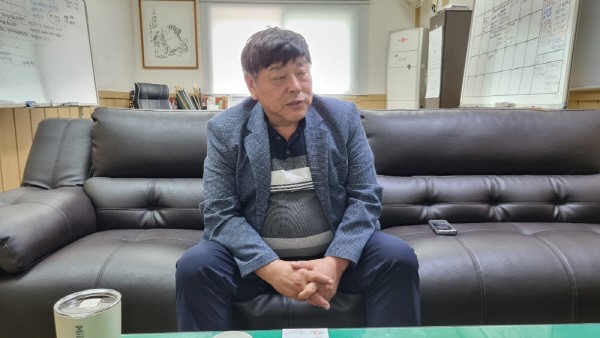Directly suggests solutions to compensate for weaknesses in military border scientific project

IT SME Nano Communication Technology plans to enter the video tracking and surveillance equipment market from the second half of this year, such as thermal cameras and Doppler radar detection sensors for mid-range searches, and will expand its sales network nationwide and sell high-value products by shifting its primary business from defense and public communication facility construction to the manufacturing industry.
Nano Communication Technology (CEO Han-yong Kim) announced on the 29th that they have developed three models for video tracking and monitoring systems; Nano Multi-Eye, Nano-Radar, and Nano-Eye, and they are conducting on-site prototype performance tests for the final stages of mass-producing high-performance products within this year.
The company established a research and development department in August last year, 12 years after its founding, and began developing new products using its patented technologies and expertise. At the end of last year they received a confirmation certificate to directly produce video surveillance devices, and they have been laying out their roadmap for the past four years. Based on their registered patented technologies, such as 'Large Structure Monitoring System' in 2017 and 'Vertical Variable CCTV Pole' in 2019, they have already completed developing prototypes and increased the number of preliminary mass production products.
Nano Communication Technology will participate in the 'Defense Industry Fair 2022' which will held at the Daejeon Convention Center from June 15 to 17, taking one step closer to realizing their dream of manufacturing for the first time since its foundation. They will be exhibiting their prototypes which they've spent countless nights researching and developing. They will be introducing prototypes that are nearly ready for mass production, such as the Nano Multi-Eye and Nano Radar, to clients in the defense and public sectors.
CEO Kim said, “Current prototypes are at 90% complete for mass production,” adding, “The prototypes incorporates specialized tracking and surveillance technologies that are desired by public institutions, such as the air force, nuclear power plants, and hydroelectric power plants, and so they are expected to attract attention at the exhibition."
Starting with the reveal of their prototypes to the rest of the world, the company plans to compete for orders in the defense and public markets such as defense, water and nuclear power, and aviation by showcasing their excellent performance evaluations compared to Chinese products; such as accurate identification of long-distance moving objects at night and resolving blind spots in security boundaries. Their goal is to achieve sales in the manufacturing industry by mass-producing products within the year.
'Nano Multi-Eye' is an integrated surveillance system with thermal cameras for mid-range search. It is equipped with a thermal imaging auto-zoom lens and a 35x optical zoom lens to monitor long-distance images day and night. At night, it can detect people and vehicles located at a distance of 3.6 km and 7.1 km, respectively. It is equipped with a 1km laser emitter to support video surveillance even in bad weather conditions such as fog and low light.
'Nano Radar' is a long-distance intrusion detection system that uses the Doppler effect. It analyzes the current location, moving speed, and direction information of a long-distance (up to 80 m) moving object in real-time without being affected by various external environments such as rain, day or night. In particular, it can even accurately detect underground moving objects using the thermal imaging camera, which is a surveillance blind spot. The tracking and surveillance system that integrates Nano Multi-Eye and Nano Radar can completely block enemy infiltration from all directions.
'Nano Eye' is a cloud storage video surveillance system. It is a system that can be operated without a separate storage device by storing remote image information to a cloud server, and can be connected to all IP cameras, and it even supports remote object detection and alarm function linkage through Doppler sensor linkage.
In addition, an SOC structure surveillance system that analyzes the stability of large building structures such as bridges, dams, power plants, and tunnels using a 550nm optical wavelength laser has been developed through industry-academia-research cooperation technology with Kangwon National University. The Vertical Variable CCTV Pole rotates 180 degrees and the height of the pole can be adjusted by 4~9m to avoid obstacles such as iron fences and tree branches that block the view.
Han-yong Kim, CEO of Nano Communication Technology, said, “Most surveillance camera manufacturers import major parts or modules from China and assemble and deliver them in South Korea, but Nano Communication Technology only imports camera lenses from Israel, and it has an absolute comparative advantage in developing and producing of major parts and SW, as well as product performance and technical support capabilities."
He said, "In particular, Chinese surveillance cameras which implement a low-cost offensive strategy in the defense market are weak in 'underground surveillance' and have a high risk of failure in monitoring and controlling moving objects that are under iron fences, tunnels, and drainage gates," adding, “Nano Communication Technology can maintain high levels of alertness with high-performance surveillance cameras."
The reason why CEO Kim chose the manufacturing industry is simple. He explained, “Since I have been in charge of facility constructions for military border scientific system installation, GOP scientific facility construction, and airfield surveillance security facilities for more than 10 years, I have continued to see problems in facility construction, so I decided to enter the manufacturing industry by registering three patents.”
Reporter Soo-min Ahn smahn@etnews.com